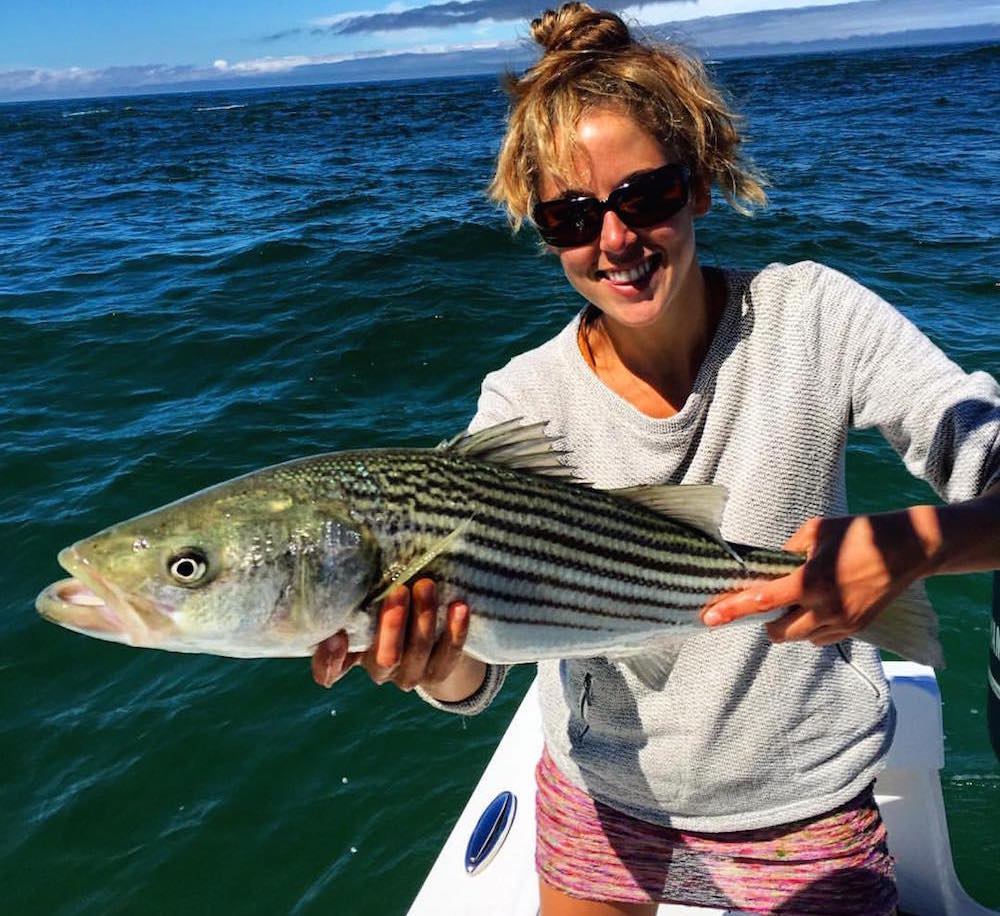Up and down the East Coast the king of all other fish is the striped bass. No other anglers are as passionate (read: obsessed) with chasing any kind of fish as striper anglers chase these fish on the fly along the coast. I know firsthand, I’ve had a spot on my arm designated for a tattoo to forever enshrine this favorite species of mine. (I’ll make sure to Snapchat it; follow PostflyTribe).
When it comes to landing stripers in the dead of summer these fish can get as spooky as a bonefish and as selective as a rainbow, so fooling this amazing fish takes the right tactic. Use the tips from these fly fishing guides from the East Coast to start hooking up now.

1. It’s Not The Where, But The When
“The biggest thing with striped bass is figuring out the best tide and time in the tide to fish the spot you’re trying to fish. For example, my favorite spot is great 2 hours on either side of low tide. The fish are moving in and out with the tide and chasing baitfish.
Once you get that locked in, take a look at the bait and try to match it. I typically use a clouser minnow, with my favorite being a size two white/olive or white/chartreuse pattern. Continuous slow strips have been working for me lately and the fish have been willing dance partners!”
–Robby Dudley (@603flyguy), New Hampshire, Postfly Ambassador

2. Who Needs Sleep?
“Summer striper fishing is my absolute favorite thing to do, but it’s both the best and worst thing. When it gets hot these fish turn nocturnal, so you see amazing sunrises and sunsets, but you don’t sleep for a few months.
Forget about sleep, go early or late (I prefer just before the false light in the morning) and use sinking line. Going in white or rough water where the baitfish are disoriented is always a good bet. The stripers take advantage of those confused baitfish and feast! I use dark colored sand eel patterns such as purple or black when it is dark out.
–Abbie Schuster (@abbie.on.the.fly), Massachusetts, Postfly Ambassador/Kismet Outfitters Guide

3. Find The Flats And Fish Them Deep
If you are going to target striped bass on the fly while the water temps are approaching the 70+ degree mark you need to have a very specific game plan for the day. Don’t devote all your time to looking for birds. Sure, keep an eye out for them, but its a low percentage play to find breaking fish anytime other than sunrise and sunset this time of year.
Work the edges and perimeter of your favorite flats at higher (preferably incoming) tides and get your sinking fly lines ready to go with some of your favorite big fly patterns. A high incoming tide means cooler water is flowing in from the ocean and this can get the bite going by lowering the water temp on the flat. Fish those big flies slowly, as fish are more lethargic this time of year, that way they won’t have to work too hard to chase down your fly.
–Captain Josh Farkes, Massachusetts, Light’N’Fly Guide
Want to join in on the salty fun and start chasing stripers where you live? First you need the right flies. Sign up now for a saltwater Postfly subscription of your own.
https://postflybox.com/blog/2018/01/26/tying-for-stripers-a-k-a-all-about-the-bass-no-treble-hook/
https://postflybox.com/blog/2017/05/03/7-simple-techniques-to-make-you-a-better-fly-fisherman/
https://postflybox.com/blog/2017/10/03/urban-angling-101-striped-bass/




2 thoughts on “3 Guide Secrets For Landing Bigger Striper Right Now”